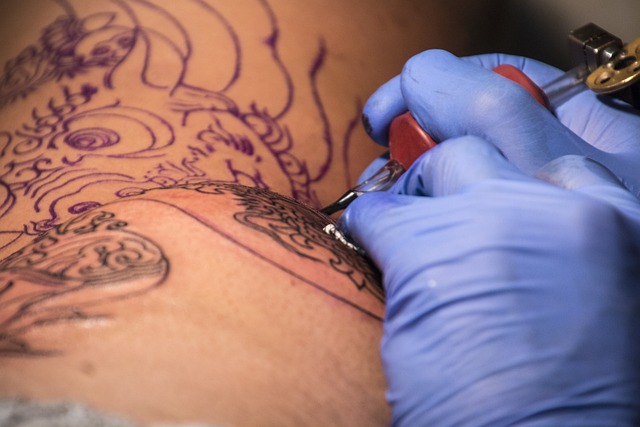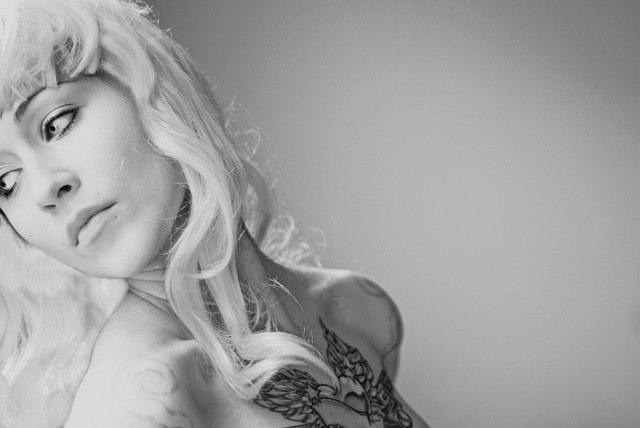
Typography ink has emerged as a captivating trend in the world of tattoo design, captivating enthusiasts with its intricate lettering and artistic expressions. This form of body art brings together the worlds of typography and tattooing, resulting in visually stunning and meaningful designs. With meticulous attention to detail and a deep understanding of letterforms, tattoo artists have elevated the art of typography ink to new heights, creating captivating designs that leave a lasting impression.
The art of typography ink is characterized by the skilled use of various typographic elements, such as fonts, styles, and layouts, to create visually striking and expressive tattoos. Each letter is meticulously crafted, paying attention to intricate details, curves, and lines, resulting in a harmonious fusion of typography and body art. The chosen font and style play a crucial role in conveying the intended message or aesthetic of the tattoo, whether it’s a bold and expressive script or a delicate and intricate calligraphy. One of the fascinating aspects of typography ink is its ability to convey emotions, ideas, and personal stories through the arrangement and design of letters. Tattoo artists can incorporate meaningful quotes, names, or phrases into their designs, using typography to enhance the impact of the message. By skillfully manipulating spacing, sizing, and embellishments, artists can create unique compositions that reflect the individuality and personality of the wearer. Typography ink also allows for the exploration of various artistic techniques and styles.
Artists can experiment with lettering effects like shadows, gradients, or even three-dimensional designs to add depth and dimension to the tattoo. The use of vibrant colors or subtle shading techniques further enhances the visual impact of the typography ink, making it truly captivating. Furthermore, the versatility of typography ink is showcased through its compatibility with different body placements. Whether it’s adorning the forearm, chest, or back, the art of lettering tattoos seamlessly adapts to the curves and contours of the body, enhancing its natural beauty. Tattoo artists have mastered the art of positioning and sizing the typography to ensure optimal visual balance and readability, ensuring that the tattoo not only looks stunning but also serves its purpose as a form of self-expression. In the ever-evolving landscape of tattoo design, typography ink stands out as a captivating form of body art that continues to push the boundaries of creativity.
With its fusion of typographic mastery and tattooing techniques, this art form allows individuals to wear their favorite quotes, poems, or words of wisdom on their skin, etching them into their personal narratives forever. In conclusion, captivating lettering tattoo design explores the art of typography ink, fusing the worlds of typography and tattooing into visually striking and meaningful designs. With meticulous attention to detail, skilled artists create harmonious compositions that convey emotions, ideas, and personal stories. Typography ink allows for artistic experimentation, embracing various techniques and styles, while seamlessly adapting to the body’s natural contours. As an ever-evolving form of self-expression, typography ink continues to captivate and leave a lasting impression in the realm of tattoo design.
What are the key elements of an exquisite lettering tattoo design?
When it comes to lettering tattoo designs, creating an exquisite piece that truly captivates the viewer requires a careful consideration of various key elements. Combining the art of typography with the permanence of body ink, these designs become a unique form of self-expression. In this article, we delve into the technical aspects that contribute to the creation of a stunning lettering tattoo design. Discover the essential elements that harmonize to produce an unforgettable typographic masterpiece.
- Font Selection:
The choice of font is fundamental to the overall aesthetic and message of a lettering tattoo. Various font styles evoke distinct emotions and convey different meanings. A tattoo artist must consider factors such as readability, versatility, and personal preference when selecting a font. Classic serif fonts exude elegance and timelessness, while bold sans-serif fonts lend a modern and edgy feel. Script and calligraphic fonts add a touch of sophistication and fluidity. By carefully selecting the appropriate font, the artist can align the design with the client’s desired message and personality. - Typography Hierarchy:
Just like in traditional graphic design, establishing a clear typographic hierarchy is crucial in lettering tattoos. This hierarchy ensures that the most important elements stand out and are easily legible. By utilizing variations in size, weight, and style, the artist can emphasize certain words or phrases within the design. This creates visual interest and allows the viewer to engage with the tattoo on multiple levels. A well-executed typographic hierarchy not only enhances the overall composition but also ensures that the intended message is effectively conveyed. - Composition and Layout:
The composition and layout of a lettering tattoo greatly impact its visual appeal. Artists must consider the placement of the design on the body and how it interacts with the natural contours and movement of the skin. They carefully balance the size, spacing, and arrangement of the letters to create a harmonious and balanced composition. This consideration of negative space, known as kerning, is crucial in preventing overcrowding or awkward gaps between letters. A thoughtful composition ensures that the design flows seamlessly and enhances the body’s natural aesthetics. - Ornamentation and Decorative Elements:
To elevate a lettering tattoo design, the inclusion of ornamentation and decorative elements can add depth and visual interest. These elements may include flourishes, embellishments, borders, or illustrative motifs that complement the typography. Skillful incorporation of these decorative elements creates a sense of craftsmanship and uniqueness within the design. However, it’s essential to strike a balance between ornamentation and legibility to prevent overpowering the lettering. - Color and Shading Techniques:
While lettering tattoos are often executed in black ink, the strategic use of color and shading techniques can transform a design into a true work of art. Color can be employed to highlight specific elements, evoke emotions, or create contrast. Shading techniques, such as stippling or hatching, add depth and dimension to the letterforms, giving them a three-dimensional appearance. The skillful use of color and shading enhances the visual impact and brings the tattoo design to life. - Precision and Execution:
An exquisite lettering tattoo design demands precise execution. The artist’s mastery of their craft shines through in the clean, crisp lines and consistent letterforms. Attention to detail is crucial to ensure that each stroke is deliberate and flawlessly executed. The tattoo artist’s technical expertise and understanding of letterforms allow them to create designs that are visually striking and stand the test of time.

How to choose the perfect font style for your lettering tattoo?
Choosing the perfect font style for your lettering tattoo is a crucial decision that can greatly influence the overall aesthetic and impact of your body art. The art of typography ink is an intricate process that requires careful consideration to ensure a captivating and visually appealing design. In this guide, we will delve into the technical aspects of selecting the ideal font style for your lettering tattoo, offering insights and tips to help you make an informed decision.
- Understand the Essence of Typography:
Typography is the art and technique of arranging typefaces to make written language visually appealing. When it comes to lettering tattoos, typography plays a pivotal role in conveying the intended message and evoking the desired emotions. It encompasses various elements such as font styles, letterforms, spacing, and alignment, all of which contribute to the overall impact of the tattoo. - Consider the Tattoo’s Theme and Meaning:
Before diving into the vast realm of font styles, take a moment to reflect on the theme and meaning behind your tattoo. Is it a quote, a personal mantra, or a symbol that holds deep significance? Understanding the essence of your tattoo will help guide your font selection process. For instance, if you seek a bold and powerful statement, you may opt for a thick, block letter font, while a delicate and intricate design might call for a script or calligraphy-inspired font. - Explore Different Font Categories:
Fonts can be broadly classified into various categories, each with its unique characteristics and visual appeal. Some common font categories include serif, sans-serif, script, calligraphy, decorative, and handwritten. By exploring these categories, you can gain insights into the diverse range of options available and find a style that resonates with your personal taste and desired tattoo aesthetics. - Assess Readability and Legibility:
While aesthetics play a crucial role in tattoo design, it is equally important to ensure the readability and legibility of the chosen font style. After all, you want your tattoo to be easily understood by others. Consider factors such as letter spacing, stroke thickness, and overall clarity when evaluating the readability of different font styles. Test out various options by creating mock-ups or seeking the guidance of a professional tattoo artist. - Harmonize with Body Placement:
The placement of your lettering tattoo on your body is another factor to consider when selecting the perfect font style. Different font styles may complement certain body areas better than others. For example, elaborate and intricate script fonts tend to work well on the ribcage or inner arm, while bolder, block letter fonts may be more suitable for larger areas such as the back or thigh. Take into account the contours and shape of your body to ensure a harmonious integration between the tattoo and its placement. - Seek Inspiration and Professional Advice:
Research and gather inspiration from various sources, such as tattoo magazines, online galleries, and social media platforms dedicated to tattoo art. This exploration can provide valuable insights into popular font styles, emerging trends, and creative approaches to lettering tattoos. Additionally, consult with a professional tattoo artist who specializes in lettering tattoos. They possess a wealth of knowledge and expertise that can guide you in choosing a font style that aligns with your vision and works well with your unique body canvas. - Personalize and Customize:
While exploring font styles, remember that you can personalize and customize them to add a unique touch to your lettering tattoo. Tattoo artists are skilled in incorporating subtle modifications, embellishments, or ornamental elements to make the design truly one-of-a-kind. Work closely with your tattoo artist to discuss any specific ideas or modifications you envision to create a bespoke font style that perfectly captures your individuality.

Inspiring lettering tattoo ideas for different body placements
When it comes to expressing individuality and personal style, lettering tattoos have become a popular choice among tattoo enthusiasts. The art of typography ink allows individuals to convey meaningful messages, quotes, or even names through beautifully designed letterforms. In this article, we will explore inspiring lettering tattoo ideas for different body placements, providing you with a plethora of options to choose from.
- Forearm Placement:
The forearm is a prime location for showcasing lettering tattoos. With its broad canvas, this area allows for larger and more intricate designs. Consider opting for bold, block letters to make a powerful statement. Alternatively, you can choose delicate script fonts for a more elegant and refined look. - Ribcage Placement:
For those seeking a more discreet placement, the ribcage offers an ideal canvas. This area allows for longer quotes or phrases to be tattooed, taking advantage of the ample space available. Consider incorporating decorative elements such as floral motifs or intricate borders to enhance the overall design. - Collarbone Placement:
The collarbone is a visually striking location that accentuates the natural contours of the body. Opt for a horizontal placement, allowing the lettering to flow gracefully along the collarbone. Consider utilizing script fonts with ornate flourishes for a feminine and delicate touch. - Wrist Placement:
The wrist is a popular choice for lettering tattoos due to its visibility and versatility. Opt for minimalistic designs with thin, elegant fonts to create a subtle yet captivating effect. You can experiment with vertical or horizontal orientations, depending on the desired aesthetic. - Back Placement:
The back provides a generous canvas for elaborate and visually impactful lettering tattoos. Consider utilizing calligraphic styles or decorative fonts to create an eye-catching design. Incorporate additional elements such as feathers, wings, or floral patterns to enhance the overall composition. - Finger Placement:
Finger tattoos have gained immense popularity in recent years due to their small size and unique placement. Due to the limited space available, opt for single-word tattoos or initials. Choose minimalist fonts such as fine-line script or gothic lettering for a sleek and fashionable look. - Ankle Placement:
The ankle offers a discreet yet visually appealing location for lettering tattoos. Opt for compact fonts with clean lines to ensure legibility. Consider incorporating symbols or icons that hold personal significance to enhance the overall design.

Discover the process of creating a personalized lettering tattoo design
Embarking on a captivating journey into the art of typography ink, one must explore the meticulous process of creating a personalized lettering tattoo design. This enthralling endeavor combines artistic flair, technical precision, and an in-depth understanding of typography to manifest a truly unique and meaningful piece of body art. In this article, we delve into the steps involved in crafting a bespoke lettering tattoo, immersing ourselves in the world of tattoo design and exploring the intricacies that contribute to its allure.
- Consultation and Conceptualization:
The first stage in the creation of a personalized lettering tattoo design is the initial consultation. During this crucial step, the tattoo artist collaborates closely with the client, seeking to understand their vision, personal preferences, and the intended message behind the design. Communication is key as the artist strives to grasp the client’s aesthetic aspirations, stylistic influences, and any specific typography or lettering styles they may desire. - Research and Inspiration:
After gathering the necessary insights from the client, the artist embarks on a journey of research and inspiration. This involves studying various typographic styles, exploring calligraphy, examining historical letterforms, and drawing inspiration from contemporary design trends. By immersing themselves in the world of typography, the artist gains a deeper understanding of the intricate details, flourishes, and nuances that can be incorporated into the lettering tattoo design. - Sketching and Drafting:
Armed with a wealth of knowledge and inspiration, the artist begins the creative process of sketching and drafting. Utilizing pencil and paper or digital tools, they experiment with different letterforms, compositions, and layouts. This stage is critical in capturing the essence of the client’s vision while infusing the design with the artist’s own creative touches. Iterations and refinements take place as the design gradually evolves into a harmonious composition. - Typography and Lettering Techniques:
As the design takes shape, the artist applies their expertise in typography and lettering techniques. They consider various aspects such as letter spacing, kerning, baseline alignment, and the balance of positive and negative space. With meticulous attention to detail, the artist ensures that each letter is meticulously crafted to achieve optimal legibility and aesthetic appeal. This stage requires a deep understanding of typographic principles and a keen eye for precision. - Digital Rendering and Enhancement:
In today’s digital age, the transition from sketch to digital rendering plays a significant role in refining the lettering tattoo design. Using graphic design software, the artist digitizes the sketched design, enhancing it further with precise lines, smooth curves, and the incorporation of additional elements, if desired. The digital medium provides flexibility, allowing for precise adjustments and experimentation while preserving the authenticity of the hand-drawn aesthetic. - Presentation and Feedback:
Once the digital rendering is complete, the artist presents the design to the client for review and feedback. This stage serves as an opportunity to fine-tune the design, accommodating any requested adjustments or additions. Effective communication between the artist and the client ensures that the personalized lettering tattoo design aligns closely with the client’s expectations and desires. - Finalization and Preparation:
After incorporating the client’s feedback, the artist finalizes the design, ensuring all elements are cohesive and harmonious. Fine details, shading, and texture may be added to elevate the overall visual impact of the design. Once the design is deemed complete, the artist prepares the stencil, a crucial step that enables the transfer of the design onto the client’s skin, ensuring accuracy during the tattooing process.






A very accessible explanation.Now everything is clear.It is a pleasure to read your posts.I am always here something new and interesting.Thank you for this entry!I look forward to reading more.Your experience and knowledge are priceless.Thank you for sharing them.A very well organized and readable entry.Just what I needed/needed.Your entry is full of inspiring examples.Uplifting!Great entry!You intrigued me from the first sentence.Amazing how much interesting information you can find in this article.